#efiks
Text

The Fattening Room is a example of how are femininity and beauty is defined differently around the world!💜
🚺🇳🇬🚺
#history#fattening room#mboko#nkuho#nigeria#african history#efik#ibibio#kalabari#femininity#traditional practices#womens history#black femininity#soft black girls#body posititivity#traditional femininity#cottagecore#black excellence#coming of age#african women#girlhood#womanhood#fertility#black girl beauty#african culture#pre colonial africa#black history#sisterhood#nickys facts
47 notes
·
View notes
Text
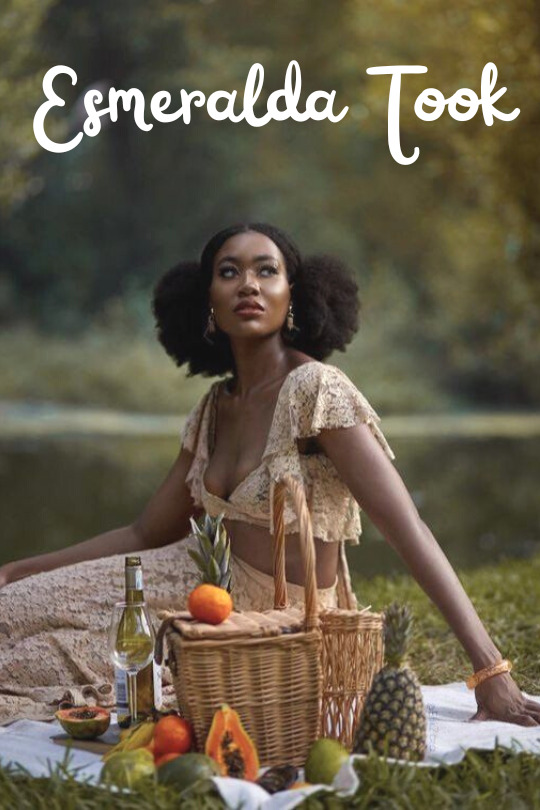
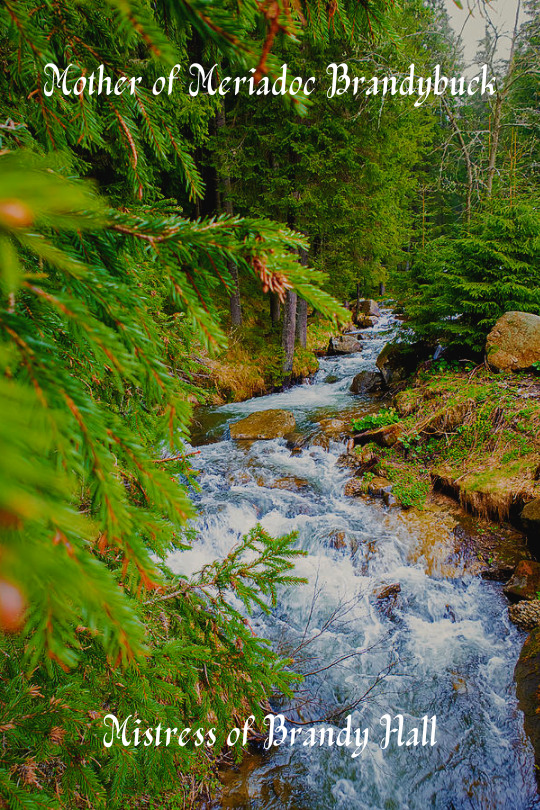
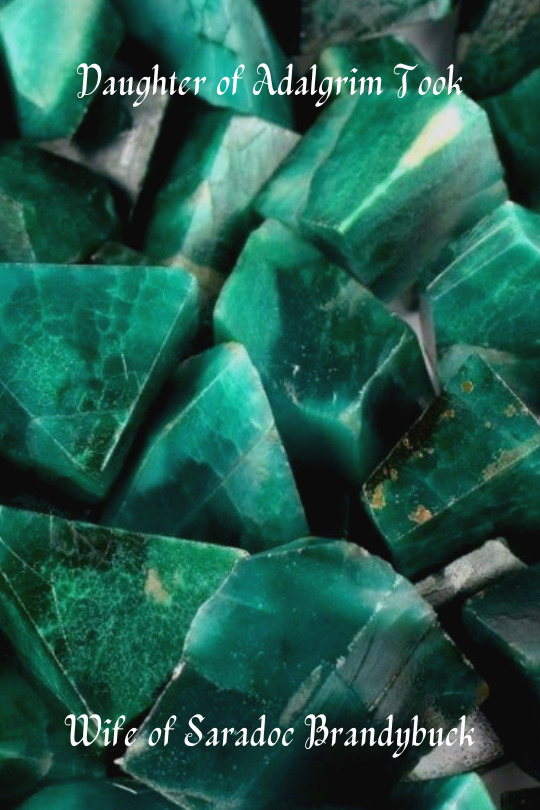

@tolkienofcolourweek day five | hobbits | esmeralda took
Esmeralda Brandybuck, née Took, was the daughter of Adalgrim Took. She married into the Brandybuck line, and when her husband Saradoc, became the Master of Brandy Hall, she became its Mistress. Her only child was Meriadoc, who accompanied Frodo Baggins on his great quest, and earned great renown around the world.
#tocweek2023#tolkienedit#oneringnet#lotr#lotredit#lord of the rings#the lord of the rings#my edit#tefain nin#my writing#edit writing#model: efik zara
33 notes
·
View notes
Text
It warms my heart so much when I see my people being recognized. Even if it's only one side. Even if it's in something as insignificant as a fictional book, a song or even in the media.
I don't see that often. I don't see the Efik people, I don't see the Ibibio people. You'd expect to see a lot of the three major tribes but no.. I don't see Hausa people either.
There are these fan pages on IG and TikTok for Igbo women and Yoruba women. While I understand that none of that says anything about the value of each tribe, it brings a sense of togetherness. Knowing your people, seeing them represented. And to be honest, it is quite lonesome, not having that.
I have seen more Edo girls than Hausa in the media, yet we're supposed to be a major tribe? Even when I do see them on TV and others, they are limited to being the uneducated. It's always Ekaette the housemaid, Musa the gateman, Ubong the driver. All with exaggerated accents to purposely make mockery.
We are not reminded day in, day out of the way igbos switch their "l" and "r" or the annoying "H" factor Yorubas have. When it's picked on in a movie, the whole internet picks a fight with the scriptwriters.
But when a certain Efik girl picked a fight for the same reason, she was clowned and told "it's not that deep"
When I meet new people and they ask where I'm from, I often make them guess but in doing so, I break my own heart. You'd once again expect that they'd guess the three major tribes but literally all the time they have no idea after guessing Yoruba and Igbo.
Are those the options? Igbo, Yoruba or unidentified? Are those the only tribes?
One day I will have the time to properly talk about the superiority complex of Igbos and the Yorubas' need to shun everyone in sight (most times, poorly executed). Of course these qualities do not apply to every single Igbo and Yoruba person.
I, Elowyn , am not impressed with the overlooking of such industrious tribes by the rest of Nigerians at large.
Bless 🤍

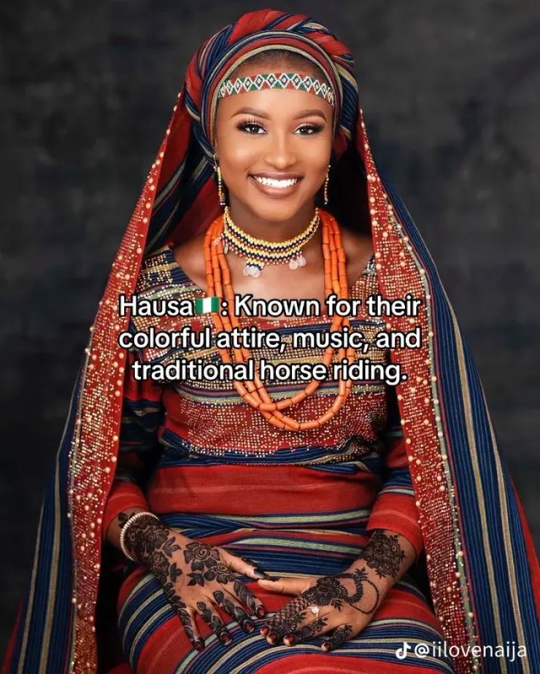
3 notes
·
View notes
Text
CENTRAL & SOUTH AFRICAN RESOURCES
The Anthropological Masterlist is HERE.
Central Africa is an African region that spans the central part of the continent.
AMBUNDU ─ “The Ambundu, or Mbundu, people are an African people. They are native to northwest Angola.”
─ Mbundu Information
─ Angolan Culture
─ Kimbundu Language (in Portuguese)
ANGOLA ─ “The Angolan people are an African people that share the Angolan culture. They are native to Angola.”
─ Angolan Information
─ Angolan History
─ Angolan Rulers
BAMBUTI ─ “The Bambuti, or Mbuti, people are an African people. They are native to Congo.”
─ Mbuti Culture
BUSHONGO ─ “Bushongo, or the Kingdom of Kuba, was an African civilization that lived from 1625 C.E. to 1884 C.E. They lived in Central Africa.”
─ Kuba Art
─ Bushongo Creation Myth
─ Bumba in Bushongo Myth
CAMEROON ─ “The Cameroonian people are an African people. They share the Cameroonian culture.”
─ Cameroonian Information
─ Cameroonian Culture
─ Cameroonian History
EFIK ─ “The Efik people are an African people. They are native to southern Nigeria and western Cameroon.”
─ Efik Language
NGOMBE ─ “The Ngombe are a Bantu linguistic group. They are native to the Democratic Republic of Congo.”
─ Akongo in Ngombe Mythology
Southern Africa is an African region that spans the southern part of the continent.
HIMBA ─ “The Himba people are an African people. They are native to northern Namibia.”
─ Himba Information
KHOEKHOE ─ “The Khoekhoe, or Khoikhoi, people are an African people. They are nomadic and native to southwestern Africa.”
─ Early Khoekhoe Society
─ Khoekhoe Religion
─ Khoekhoe Language
KHOISAN ─ “The Khoisan people are an African people. The term refers to anyone in South Africa that does not speak a Bantu language.”
─ San Culture
─ Khoisan Culture
─ Khoisan Dictionary
PEDI ─ “The Pedi, or Bapedi, people are an African people. They are native to northeastern South Africa.”
─ Pedi Culture
─ Pedi History
─ Pedi History
SOTHO ─ “The Sotho, or Basotho, people are an African people. They are native to southern Africa.”
─ Basotho Clothing
─ Sesotho Language
XHOSA ─ “The Xhosa people are an African people. They are native to the Eastern Cape Province in South Africa.”
─ Xhosa Information
─ Xhosa Folklore
─ Xhosa Language
#resources#central africa#south africa#ambundu#angola#bambuti#bushongo#cameroon#efik#ngombe#himba#khoekhoe#khoisan#pedi#sotho#xhosa
53 notes
·
View notes
Text
What is the Ekpe Society?
The Ekpe society, also known as the Leopard Society, is a traditional fraternal secret society found primarily among the Ejaham, Efik, Ibibio, and Igbo peoples of southeastern Nigeria and western Cameroon. This society plays a significant role in the cultural, social, and political life of these communities. The society is known for its elaborate rituals, symbols, and hierarchical structure. The…

View On WordPress
5 notes
·
View notes
Text
I love the brunt of zora neale hurston’s work but she so wrong for lying about the dahomey & lying on cudjoe lewis like dat .
and idk how much of it is hurston& moreso the presumption ppl have made about barracoon being some sort of history… bc it was published at the time in new ebony mag as fictional. and theres this remark on her work (which definitely maps onto barracoon’s prose.. passages about heathens and all)

#‘Yoruba’ HES SPEAKING EFIK. AN ETHNICITY WHO AT THE TIME LIVED THOUSANDS OF MILES AWAY FROM THE DAHOMEY?#she derived much of her conjectures on dahomey str8 from a pro slavery white author & claimed it was cudjoe’s words#yn.#history#africa#blackness#pseudohistory
4 notes
·
View notes
Text
Look book: 8 Bridal Photoshoot Inspiration Vol 3
Hi there, welcome to another edition of Nigerian bridal photoshoot where we compile the best and most extravagant looks for your inspirational purposes.
Today’s editions comes from 4 amazing tribes in Nigeria when it comes to traditional bridal weddings, we love the elegance and rich colour contrast they all exhibit and trust us when we say they are elegant. If you haven’t decided on a look for…
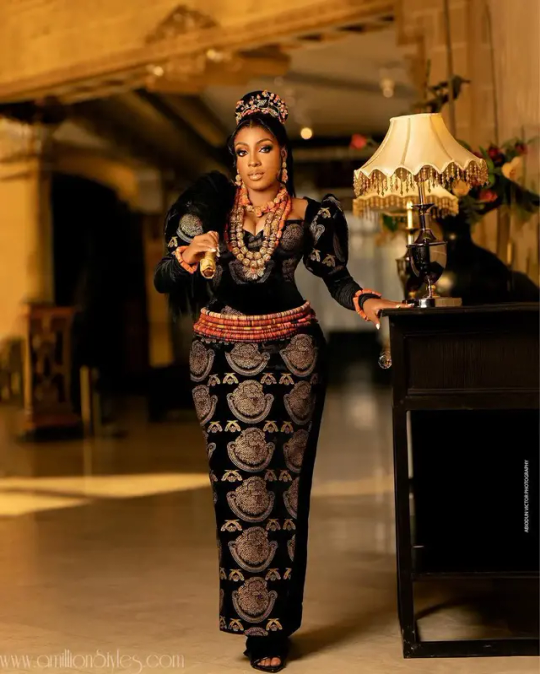
View On WordPress
0 notes
Text
PRENUPTIAL: The Fattening Room Experience
The fattening room is a unique and ancient tradition practiced by some Nigerian cultures, particularly the Efik and the Anang, to prepare young women for marriage and motherhood. It is a form of seclusion and pampering that can last for months or even years, depending on the wealth and preferences of the family.
Young ladies are taught how to cook
During this period, the women are fed rich and…

View On WordPress
0 notes
Text
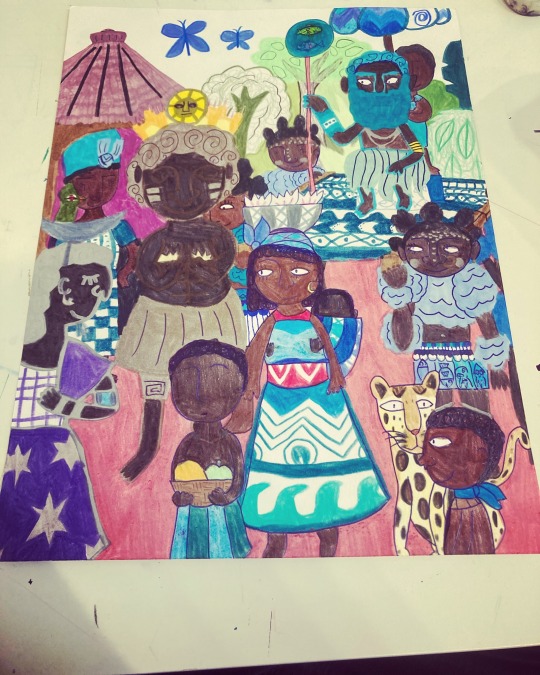
This is a drawing I did at Sage Studios called, “The Water God’s god-dom enters the house of the Sun God and Moon Goddess.” It’s inspired by an old Nigerian myth about how the sun and moon gave up their home for the water to live in the sky, and recalling from a retelling illustrated by Blair Lent, I was greatly inspired by how these deities had their own people or living things they governed over. I also took influence from Renaissance, Baroque, and early 19th century paintings that depicted Greco-Roman mythological events and gave it a more inclusive flair in my own style. I used colored pencils, pen, regular pencils, and permanent maker on paper. It took me from late Spring to August 11th, 2023 to finish this.
#nigerian mythology#west african folklore#i support representation#african mythology#efik ibibio fairy tales#art
1 note
·
View note
Text
Actress Rita Dominic, Uche Jombo, Mo Abudu, others gush over Inidima Okojie Efik outfit to her traditional wedding (Photos)
Actress Rita Dominic, Uche Jombo, Mo Abudu, others gush over Inidima Okojie Efik outfit to her traditional wedding (Photos)
Nollywood actress, Inidima Okojie no doubt held the world spellbound with her enchanting traditional wedding.
From her traditional bridal dress to her ornaments, dance groups, aso ebi, event hall and more, the actress gave Nigerians something to talk about.
With a star studded wedding ceremony which shut down the internet, Ini Dima Okojie no doubt made a statement with her chocolate love…

View On WordPress
# CHOCOLATE LOVE STORY# INIDIMA EFIK BRIDAL DRESS# INIDIMA OKOJIE# NAIJA NEWS TODAY#CELEBRITY WEDDING#Kate Henshaw#Rita Dominic#Uche Jombo
0 notes
Text
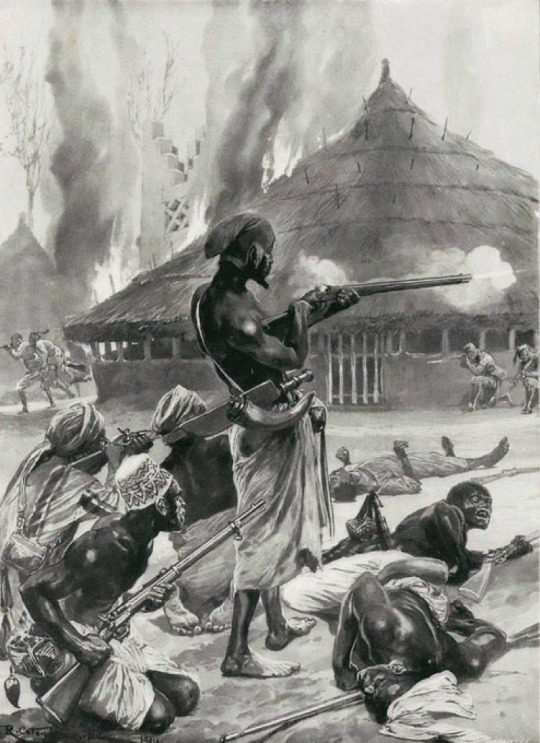
Aro Confederacy
The Aro Confederacy (1690–1902) was a political union orchestrated by the Aro people, Igbo subgroup, centered in Arochukwu in present-day southeastern Nigeria. The Aro Confederacy kingdom was founded after the beginning of the Aro-Ibibio Wars. Their influence and presence was all over Eastern Nigeria, lower Middle Belt, and parts of present-day Cameroon and Equatorial Guinea during the 18th and 19th centuries. The Arochukwu Kingdom was an economic, political, and an oracular center as it was home of the Ibini Ukpabi oracle, High Priests, the Aro King Eze Aro, and central council (Okpankpo). The Aro Confederacy was a powerful and influential political and economic alliance of various Igbo-speaking communities in southeastern Nigeria. It emerged during the 17th century and played a significant role in the region until the late 19th century.
The exact origins of the Aro Confederacy are not precisely documented, but it is believed to have been established around the mid-17th century. The Aro people, who were part of the Igbo ethnic group, inhabited the region around present-day Arochukwu in Abia State, Nigeria. They were skilled traders and missionaries who played a pivotal role in connecting various Igbo communities. This migration and their military power, and wars with neighboring kingdoms like supported by their alliances with several related neighboring Igbo and eastern Cross River militarized states (particularly Ohafia, Edda, Abam, Abiriba, Afikpo, Ekoi, Bahumono, Amasiri etc.), quickly established the Aro Confederacy as a regional economic power. The Aro Confederacy's strength came from its well-organized network of Aro agents who were dispersed across different communities in the region. These agents acted as intermediaries in trade, diplomacy, and religious matters. They facilitated commerce, resolved disputes, and spread the worship of the Aro deity known as the "Long Juju" oracle."The Opening Up of Nigeria, the Expedition Against the Aros by Richard Caton Woodville II" 1901
The "Long Juju" oracle was the spiritual centerpiece of the Aro Confederacy. It was housed in Arochukwu and considered a potent source of political authority and religious guidance. The Aro people used the oracle to enforce their influence and control over surrounding communities. It also served as a means to administer justice and settle disputes, often attracting pilgrims seeking solutions to their problems.
The Aro Confederacy gained significant economic power through trade and commerce Their economy was primarily based on agriculture, with the cultivation of crops like palm oil, yams, and cassava. They were also involved in trade with neighboring communities and European merchants. They controlled trade routes that passed through their territories, collecting tolls and taxes from traders. The Aro also engaged in the Trans-Atlantic slave trade by capturing and selling slaves to European traders.
Aro activities on the coast helped the growth of city-states in the Niger Delta, and these city states became important centres for the export of palm oil and slaves. Such city-states included Opobo, Bonny, Nembe, Calabar, as well as other slave trading city-states controlled by the Ijaw, Efik, and Igbo. The Aros formed a strong trading network, colonies, and incorporated hundreds of communities that formed into powerful kingdoms. The Ajalli, Arondizuogu, Ndikelionwu, and Igbene Kingdoms were some of the most powerful Aro states in the Confederacy after Arochukwu. Some were founded and named after commanders and chiefs like Izuogu Mgbokpo and Iheme who led Aro/Abam forces to conquer Ikpa Ora and founded Arondizuogu. Later Aro commanders such as Okoro Idozuka (also of Arondizuogu) expanded the state's borders through warfare at the start of the 19th century. Aro migrations also played a large role in the expansion of Ozizza, Afikpo, Amasiri, Izombe, and many other city-states. For example, Aro soldiers founded at least three villages in Ozizza. The Aro Confederacy's power, however, derived mostly from its economic and religious position. With European colonists on their way at the end of the 19th century, things changed.Burning of Arochukwu 1901
During the 1890s, the Royal Niger Company of Britain bore friction with the Aros because of their economic dominance. The Aro resisted British penetration in the hinterland because their economic and religious influence was being threatened. The Aro and their allies launched offensives against British allies in Igboland and Ibibioland. After failed negotiations, the British attempted to conquer the Aro Confederacy in 1899. By 1901, the tensions were especially intensified when British prepared for the Aro Expedition. The invasion of Obegu (in Igboland) was the last major Aro offensive before the start of the Anglo-Aro War. In November 1901, the British launched the Aro Expedition and after strong Aro resistance, Arochukwu was captured on December 28, 1901. By early 1902, the war was over, and the Aro Confederacy collapsed. Contrary to the belief that the Ibini Ukpabi was destroyed, the shrine still exists, and is intact in Arochukwu and serves mainly as a tourist site.

#african#afrakan#kemetic dreams#africans#afrakans#brown skin#brownskin#african culture#afrakan spirituality#arochukwu#anglo aro war#obegu#igboland#ibibioland#igbo#igbo culture#british#long juju#aro confederacy#confederacy#nigerian#cameroon
26 notes
·
View notes
Text
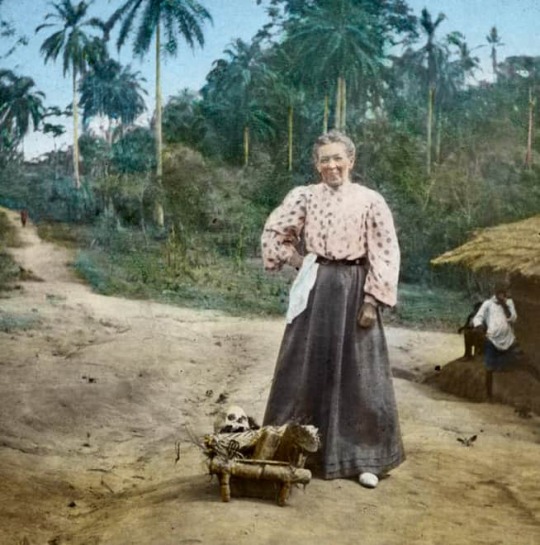

Mary Slessor, the Scottish missionary, was born on this day in 1848 in Aberdeen.
It's only the past few years that interest has grown in Slessor, thanks mainly to The Clydesdale Bank honouring her memory on their £10 note
Mary was the second of seven children of Robert and Mary Slessor. Her father, originally from Buchan, was a shoemaker by trade. In 1859, the family moved to Dundee in search of work. Robert Slessor was an alcoholic and, unable to keep up shoemaking, took a job as a labourer in a mill. Her mother was a skilled weaver and went to work in the mills. At the age of eleven, Mary began work as a "half-timer" in the Baxter Brothers' Mill, meaning she spent half of her day at a school provided by the mill owners and the other half working for the company.The Slessors lived in the slums of Dundee. Mary's father and both brothers died of pneumonia, leaving behind only Mary, her mother, and two sisters By age fourteen, Mary had become a skilled jute worker and worked 12 hour shifts to help support her family.
Her mother was a devout Presbyterian who read each issue of the Missionary Record, a monthly magazine published by The United Presbyterian Church (later the United Free Church of Scotland) to inform members of missionary activities and needs. Slessor developed an interest in religion and when a mission was instituted in Quarry Pend (close by the Wishart Church), she wanted to teach. Slessor was 27 when she heard that David Livingstone, the famous missionary and explorer, had died and decided she wanted to follow in his footsteps.
Eventually, Slessor applied to the United Presbyterian Church's Foreign Mission Board. After training in Edinburgh, she set sail in the SS Ethiopia on 5 August 1876, and arrived at her destination in West Africa just over a month later.
She was a tough working class,woman, who was able to penetrate the interior of Nigeria and reach tribes who were so hostile to the white invaders that the men who had attempted the task before her had been murdered.
Although considered unconventional by Europeans, and certainly determined in character, she became a genuine peace-maker in numerous ways. She established schools and became well known in her struggle to reverse the practice of condemning twin babies to death. She fought for the acceptance of the small-pox vaccinations amongst the local people. She certainly served as an able fore-runner to the many church planters that followed her to Nigeria.
She gained such respect that at times she was called upon to act as a judge to help settle disputes between tribes. Mary Slessor wasn’t just there to spread Christianity and didn’t gain great numbers of converts but as a Christians peacemaker and human rights reformer she was an unparalleled success.
Like her fellow Scot, David Livingstone, she was considered unconventional by European standards. Slessor lived amongst the people in a mud hut, certainly unusual for western missionaries at the time.
The British colonial authorities respected her, and called upon her for help, actually funding some of her projects – but they were also exasperated by her: she had somehow freed herself from the European obsession with time keeping and therefore kept very irregular and unpredictable hours.
But she much loved by the local Efik peoples, was fluent in their language and genuinely adapted her life to serve them. She was named ‘The Mother of all Peoples’ by the locals, there are statues, memorials and reminders of Mary all over Nigeria.
If you ant to know more check out this web page from the Mary Slessor Foundation http://maryslessor.org/mary-slessor/
14 notes
·
View notes
Text

7 NIGERIAN PEPPERSOUP SPICES
1. Calabash Nutmeg
Other names: African nutmeg
Botanical name: Monodora Myristica
Local Names: Erhe – Urhobo; Iwo – Itsekiri; Ehuru – Igbo; Ariwo – Yoruba; Gujiya dan miya – Hausa; Ukposa – Bini
Consists of: Shell and seed
Parts Used: Seed
Uses: condiment in soups, combined to make spice blends for peppersoup
2. Gbafilo
Other names: Rough-skinned/ Grey/ Guinea plum
Botanical name: Chrysobalanus icaco
Local Names: Gbafilo/ Gbafilor– Itsekiri And out of interest, in Brazil, it is known as Grageru or Abageru
Consists of: Sandpaper like shell and kernel
Parts Used: kernel
Uses: condiment in soups, combined to make spice blends for peppersoup
3. Grains of Selim
The fruits are narrow, slightly torulose, dark brown or black, about 2in. long, borne many (separate carpels) together on a stout peduncle (The Useful Plants of West Africa)
Other names: African/ Guinea/ Ethiopian Pepper
Botanical name: Xylopia Aethiopica
Local Names: Urheri – Urhobo; Unien – Bini; Atta – Ibibio/Efik; Uda – Igbo; Eeru – Yoruba
Consists of: Skin and seeds. The seeds are bitter
Parts Used: both – the skin is used more often, ground and added to soups or bruised and used whole
Uses: condiment in soups, combined to make spice blends for peppersoup, added to agbo (bitters), put in water to purify it, added to palm wine as a flavourer.
4. Uziza
Other names: Bush Pepper, Guinea cubebs, West African Black Peppers
Botanical name: Piper Guineense
Local Names: Edusa – Ibibio; Eti-nkeni – Efik; Uziza – Igbo; Iyere – Yoruba
Consists of: Dried black berries
Uses: condiment used in soups, rice, etc
5. Alligator Pepper
Other names: Grains of Paradise
Botanical name: Aframomum Melegueta
Local Names: Ehie ado – Bini; Ntuen – Efik; Ose oji/ okwa – Igbo; Oburo – Yoruba
Consists of: Skin and seeds. The seeds are aromatic and pungent, with some strains of cardamom flavour
Parts Used: the seeds are ground and added to soups, stews; also chewed with kolanuts where it produces a numbing effect
Uses: condiment in soups, combined to make spice blends for peppersoup, added to agbo (bitters), put in water to purify it, added to palm wine as a flavourer.
6. Tetrapleura Tetraptera
Other names: Prekese [Ghana]
Botanical name: Aframomum Melegueta
Local Names: Aridan – Yoruba; Edem Inang – Efik; Ighimiakhie – Bini; Usho usho – Igbo
Consists of: long winged fruit pods, two hardy, two soft and sweet edible wings.
Parts Used: soft wings are edible and used
Uses: ground for soups, roasted and ground for soups and sauces. Ground pulp is sometimes added to palm wine to flavour it.
7. Umilo, Omilo
Other names: Cocoplum [Caribbean]
Botanical name: Chrysobalanus icaco
Local Names: Omilo/ Umilo – Itsekiri
Consists of: Shell and seed/ kernel
Parts Used: Shell is broken and seed/ kernel inside is used.
7 notes
·
View notes
Note
Hello! I was just wondering if you had any posts about Nigerian clothing, preferably Igbo, Efik or Yoruba?
Thank you so much for making these wonderful posts! I wish you an excellent day/night :D
Hello thanks a lot :)
I have a post for Yoruba clothing but not for Efik and Igbo yet, I'll post them in the future :)
23 notes
·
View notes
Text
The first very obvious archetype I have found is the creator archetype. It classifies as specifically creator of the universe, world and humanity. The following is a list of some creator deities: Yahweh, Phanes, Abassi, Bunjil, Yaldabaoth, Izanami and Izanagi
Yahweh: National god of the Israelites. Unknown origin but thought to have emerged as a divine warrior as he was at first associated with Seir, Edom, Paran and Teman. Worship of his dates back to early Iron age and late bronze age. Shares similarities with the "weather deities" and "war deities" (both of which will likely be featured as other archetypes). Actually was worshipperd in a pantheon with El, Baal and Asherah but in later practices these gods were absorbed into Yahwist religion.
Phanes: Creator god in Orphic cosmology. Said to have emerged from the cosmic egg intertwined with a serpent at the begging of creation. Often equated with Eros or Mithras. It was said that Chronos created the cosmic egg Phanes emerged from which is a bit confusing and means that Chronos technically created the creator of the universe. Phanes is often thought to have been a more androgynous deity. Phanes was considered to be a god of light and goodness who's name means "to bring light" or "to shine"
Abassi: Is the supreme creator god of the Efik, Ibibio and Annang people in Nigeria. Following the arrival of christians in Nigeria Abassi emerged in relation to the christian concept of god. Was said to be an all knowing and all seeing omnipresent figure. Was said to have created humanity but dosen't directly communicate with it instead communicating through a pantheon of spirits called the nedem.
Bunjil: regarded as a culture hero, creator deity and ancestral being in Australian Aboriginal religion and mythology. Most commonly depicted as a wedge tailed eagle. Was considered to be one of two moiety ancestors (with the other one being the crow). Was said to have two wives and a son called Binbeal the rainbow. He is assisted by a group of six Shamans who are supposed to represent the Eaglehawk clans
Yaldabaoth: often called the demiurge is the evil creator god of the material world in gnosticism. Seen as the false god who keeps souls trapped in they're fleshy bodies. In some sectors he is described as a serpent with a lion head. Was birthed by Sophia the personification of wisdom. He received powers of light from his mother however decided to use them for evil. Yaldabaoth decided to create six other angles who then decided to rebel against him. In order to keep them in check he created the material world
Izanami: also called Izanami-no-Mikoto she alongside Izanagi was the creator goddess of theJapanese archipelago in Japanese Shindo religion. She is the shinto mother goddess. She sadly died during childbirth and turned into a absolute monster in the underworld and was left by Izanagi. Izanami was also a goddess of death
Izagami: often can't Izanagi-no-Mikoto was a god of creation and life. Shaped the earth alongside Izanami by using a heavily spear.
that's all the creator deities I want to go over. The creator archetype is definitely one of the more Interesting ones. There are alot of deities I haven't added but who knows maybe I'll add some at a later time.
If you find any mistakes then please comment them :;)
6 notes
·
View notes
Note
ure so efik reafa red for that
thankyou i aporeaciate it
2 notes
·
View notes